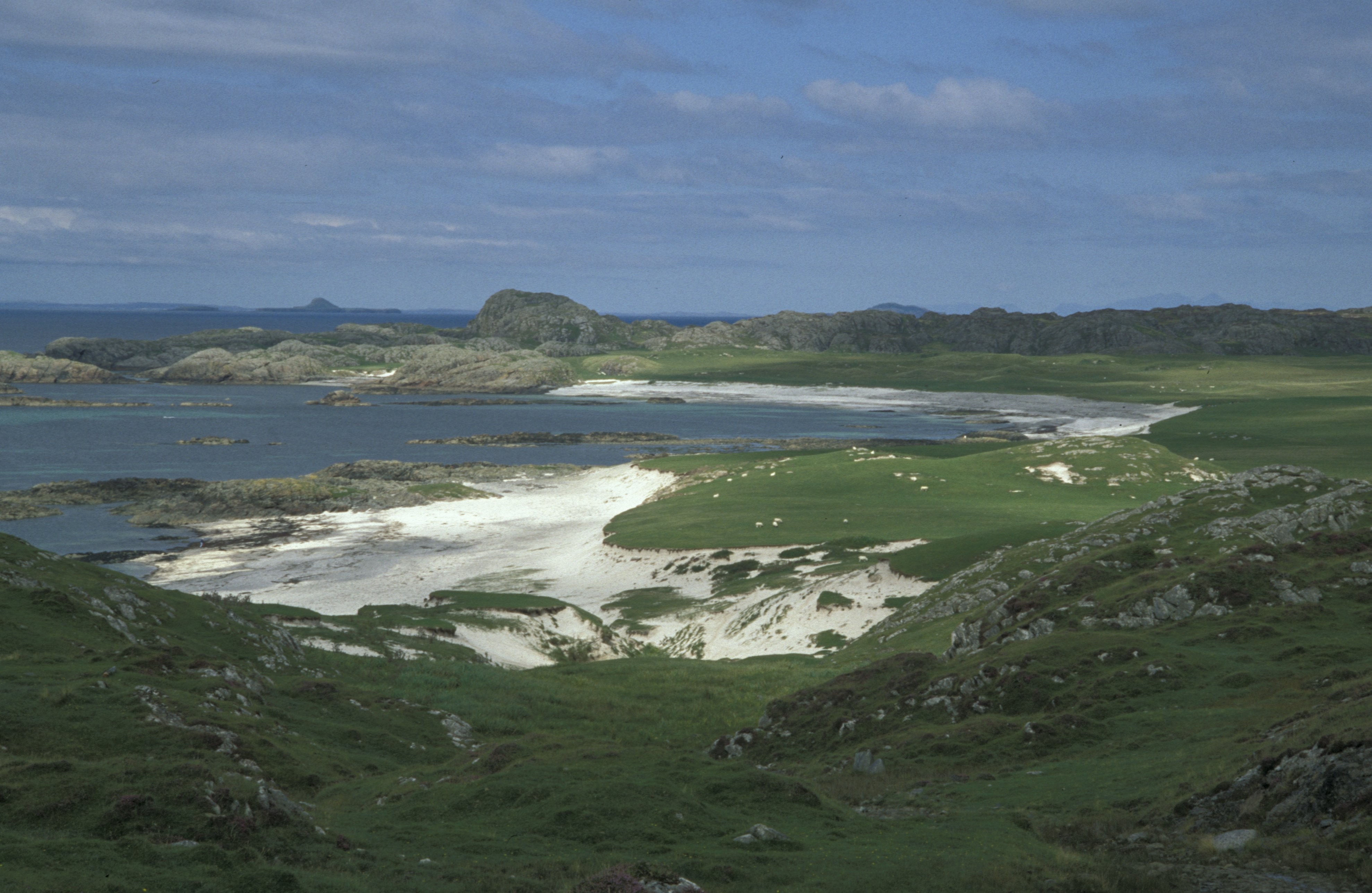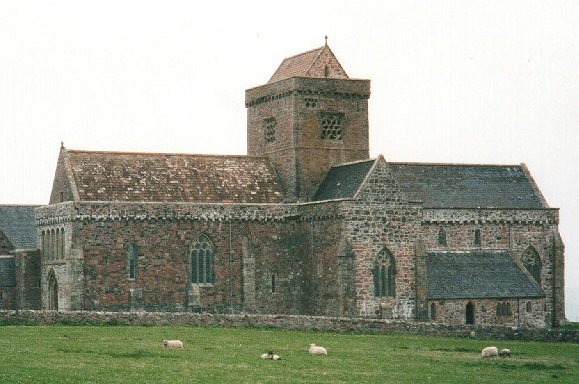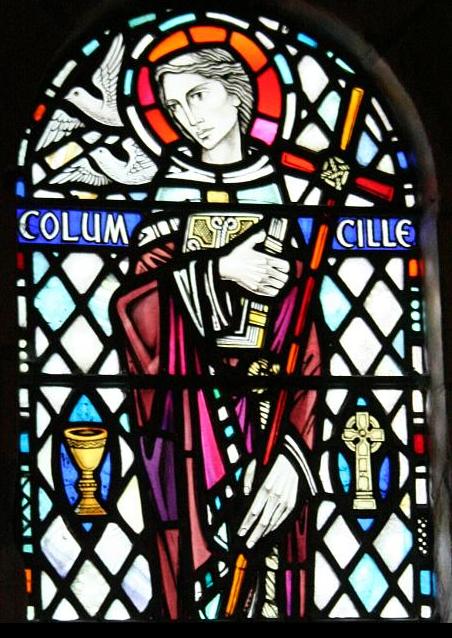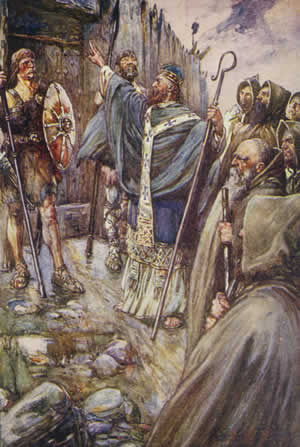|
Fergno Britt Mac Faílbi
Fergnae or Fergno Britt mac Faílbi was the fourth abbot of Iona (605–623). Fergnae was the first abbot of Iona to have come from outside Saint Columba's generation. Moreover, unlike his predecessors, he was not from the Cenél Conaill, the kin-group to which Columba belonged and he may also have been British and a bishop. Adomnán, in his ''Vita Columbae'', says that he was 'a young man of good ability' and records that he witnessed one of Columba's miracles.Adomnán, ''Vita Columbae'' III.19. Fergnae died in 623, and was succeeded by Ségéne Saint Ségéne (also called Segein, Segeni, Segeno, Seghene, Segin, Segine, Ségíne, Segineus, Segini, Seighin; c. 610 – 24 May 688), was the Archbishop of Armagh, Bishop of Armagh, Ireland from 661 to 24 May 688. Genealogy and birth St. Ség .... References Bibliography * Sharpe, Richard, ''Adomnán of Iona: Life of St. Columba'' (London, 1995) 623 deaths Abbots of Iona 6th-century Irish abbots Year of birth unknown [...More Info...] [...Related Items...] OR: [Wikipedia] [Google] [Baidu] |
Abbot
Abbot is an ecclesiastical title given to the male head of a monastery in various Western religious traditions, including Christianity. The office may also be given as an honorary title to a clergyman who is not the head of a monastery. The female equivalent is abbess. Origins The title had its origin in the monasteries of Egypt and Syria, spread through the eastern Mediterranean, and soon became accepted generally in all languages as the designation of the head of a monastery. The word is derived from the Aramaic ' meaning "father" or ', meaning "my father" (it still has this meaning in contemporary Hebrew: אבא and Aramaic: ܐܒܐ) In the Septuagint, it was written as "abbas". At first it was employed as a respectful title for any monk, but it was soon restricted by canon law to certain priestly superiors. At times it was applied to various priests, e.g. at the court of the Frankish monarchy the ' ("of the palace"') and ' ("of the camp") were chaplains to the Merovingian and ... [...More Info...] [...Related Items...] OR: [Wikipedia] [Google] [Baidu] |
Iona
Iona (; gd, Ì Chaluim Chille (IPA: �iːˈxaɫ̪ɯimˈçiʎə, sometimes simply ''Ì''; sco, Iona) is a small island in the Inner Hebrides, off the Ross of Mull on the western coast of Scotland. It is mainly known for Iona Abbey, though there are other buildings on the island. Iona Abbey was a centre of Gaelic monasticism for three centuries and is today known for its relative tranquility and natural environment. It is a tourist destination and a place for spiritual retreats. Its modern Scottish Gaelic name means "Iona of (Saint) Columba" (formerly anglicised as "Icolmkill"). In 2019, the island's estimated population was 120. Residents engage in farming, using traditional methods. Other occupations include crofting and tourism-related work; some craftsmen make goods for sale locally, such as pottery, tapestries, jewellery and knitted goods. In March 1980, the Hugh Fraser Foundation donated much of the main island (and its off-lying islands) to the current owner, the National ... [...More Info...] [...Related Items...] OR: [Wikipedia] [Google] [Baidu] |
Saint Columba
Columba or Colmcille; gd, Calum Cille; gv, Colum Keeilley; non, Kolban or at least partly reinterpreted as (7 December 521 – 9 June 597 AD) was an Irish abbot and missionary evangelist credited with spreading Christianity in what is today Scotland at the start of the Hiberno-Scottish mission. He founded the important abbey on Iona, which became a dominant religious and political institution in the region for centuries. He is the patron saint of Derry. He was highly regarded by both the Gaels of Dál Riata and the Picts, and is remembered today as a Catholic saint and one of the Twelve Apostles of Ireland. Columba studied under some of Ireland's most prominent church figures and founded several monasteries in the country. Around 563 AD he and his twelve companions crossed to Dunaverty near Southend, Argyll, in Kintyre before settling in Iona in Scotland, then part of the Ulster kingdom of Dál Riata, where they founded a new abbey as a base for spreading Celtic Christianit ... [...More Info...] [...Related Items...] OR: [Wikipedia] [Google] [Baidu] |
Cenél Conaill
Cenél is a surname. Notable people with the surname include: *Cenél Conaill, the name of the "kindred" or descendants of Conall Gulban, son of Niall Noígiallach defined by oral and recorded history *Cenél nEógain (in English, Cenel Eogan) is the name of the "kindred" or descendants of Eógan mac Néill, son of Niall Noígiallach who founded the kingdom of Tír Eógain in the 5th century *Kin groups forming part of Dal Riata, most of which, after a varied evolution eventually became the Scottish region of Argyll **Cenél nÓengusa, a kin group who ruled the island of Islay, and perhaps nearby Colonsay. After spending 4 centuries as part of Norway, and another 4 as part of the quasi-independent Lordship of the Isles, this region became Scottish in the late 15th century. ** Cenél nGabráin, the "kindred" of Gabrán, who ruled Kintyre, Knapdale (at that time including the lands between Loch Awe and Loch Fyne - Craignish, Ardscotnish, Glassary, and Glenary), the island of Arran ... [...More Info...] [...Related Items...] OR: [Wikipedia] [Google] [Baidu] |
Adomnán Of Iona
Adomnán or Adamnán of Iona (, la, Adamnanus, Adomnanus; 624 – 704), also known as Eunan ( ; from ), was an abbot of Iona Abbey ( 679–704), hagiographer, statesman, canon jurist, and saint. He was the author of the ''Life of Columba'' ( la, Vita Columbae), probably written between 697 and 700. This biography is by far the most important surviving work written in early-medieval Scotland, and is a vital source for our knowledge of the Picts, and an insight into the life of Iona and the early-medieval Gaelic monk. Adomnán promulgated the Law of Adomnán or "Law of Innocents" ( la, Lex Innocentium). He also wrote the treatise ('On Holy Places'), an account of the great Christian holy places and centres of pilgrimage. Adomnán got much of his information from a Frankish bishop called Arculf, who had personally visited Egypt, Rome, Constantinople and the Holy Land, and visited Iona afterwards. Life Adomnán was born about 624, a relative on his father's side of Col ... [...More Info...] [...Related Items...] OR: [Wikipedia] [Google] [Baidu] |
Vita Columbae
The ''Life of Columba'' ( la, Vita Columbae) is a hagiography recounting the life of Columba, the founder of Iona Abbey, written a century after Columba's death by Adomnán, one of his successors as Abbot of Iona. Adomnán (also known as Eunan), served as the ninth Abbot of Iona until his death in 704. James Earle Fraser asserts that Adomnán drew extensively from an existing body of accounts regarding the life of Columba, including a Latin collection entitled "De uirtutibus sancti Columbae", composed c. 640 A.D. This earlier work is attributed to Cummene Find, who became the abbot of Iona and served as the leader of the monastic island community from 656 until his death in 668 or 669 A.D. While the ''Vita Columbae'' often conflicts with contemporaneous accounts of various battles, figures, and dates, it remains the most important surviving work from early medieval Scotland and provides a wealth of knowledge regarding the Picts and other ethnic and political groups from this time ... [...More Info...] [...Related Items...] OR: [Wikipedia] [Google] [Baidu] |
Ségéne Of Iona
Saint Ségéne (also called Segein, Segeni, Segeno, Seghene, Segin, Segine, Ségíne, Segineus, Segini, Seighin; c. 610 – 24 May 688), was the Bishop of Armagh, Ireland from 661 to 24 May 688. Genealogy and birth St. Ségéne was from Achad Chlaidib (Field of the Sword), possibly the modern townland of Aghnacloy, Barony of Oneilland East, County Armagh. His father’s name was Bresal. Priesthood At this time the Irish Church was preoccupied with the Paschal cycle Question, i.e. how to compute the date of Easter and Christ’s death. The southern part of Ireland accepted the Dionysian computation - which was now being used at Rome - at the Synod of Magh Lene in 630 AD. However, the Northern clergy were followers of the method proposed by Iona and its affiliate churches, known as the Irish Computation. In order to settle the matter Tómméne, the Bishop of Armagh, with some other Ulster bishops and clergy, sent a letter in the first half of 640 to Pope Severinus, setting out bot ... [...More Info...] [...Related Items...] OR: [Wikipedia] [Google] [Baidu] |
Abbot Of Iona
The Abbot of Iona was the head of Iona Abbey during the Middle Ages and the leader of the monastic community of Iona, as well as the overlord of scores of monasteries in both Scotland and Ireland, including Durrow, Kells and, until the Synod of Whitby, Lindisfarne. It was one of the most prestigious clerical positions in Dark Age Europe, and was visited by kings and bishops of the Picts, Franks and English. The Ionan abbots also had the status of Comarba of Colum Cille, i.e. the successors of that Saint, Columba.Some sources refer to earlier abbots as Abbot of Hy. "Hy" being an early name for Iona (see Iona: Etymology and "He considered him as contemporary with Mugron, abbot of Hy (''d''. 980)..." ()) Iona's position as head of the Columban network (''familia'') of churches declined over time, with abbots based at Derry, Raphoe, Kells and Dunkeld. In Scotland, the abbots of Dunkeld ruled much of central Scotland in the 11th century, and functioned as some of the most important ... [...More Info...] [...Related Items...] OR: [Wikipedia] [Google] [Baidu] |
623 Deaths
6 (six) is the natural number following 5 and preceding 7. It is a composite number and the smallest perfect number. In mathematics Six is the smallest positive integer which is neither a square number nor a prime number; it is the second smallest composite number, behind 4; its proper divisors are , and . Since 6 equals the sum of its proper divisors, it is a perfect number; 6 is the smallest of the perfect numbers. It is also the smallest Granville number, or \mathcal-perfect number. As a perfect number: *6 is related to the Mersenne prime 3, since . (The next perfect number is 28.) *6 is the only even perfect number that is not the sum of successive odd cubes. *6 is the root of the 6-aliquot tree, and is itself the aliquot sum of only one other number; the square number, . Six is the only number that is both the sum and the product of three consecutive positive numbers. Unrelated to 6's being a perfect number, a Golomb ruler of length 6 is a "perfect ruler". Six is a con ... [...More Info...] [...Related Items...] OR: [Wikipedia] [Google] [Baidu] |
Abbots Of Iona
The Abbot of Iona was the head of Iona Abbey during the Middle Ages and the leader of the monastic community of Iona, as well as the overlord of scores of monasteries in both Scotland and Ireland, including Durrow, Kells and, until the Synod of Whitby, Lindisfarne. It was one of the most prestigious clerical positions in Dark Age Europe, and was visited by kings and bishops of the Picts, Franks and English. The Ionan abbots also had the status of Comarba of Colum Cille, i.e. the successors of that Saint, Columba.Some sources refer to earlier abbots as Abbot of Hy. "Hy" being an early name for Iona (see Iona: Etymology and "He considered him as contemporary with Mugron, abbot of Hy (''d''. 980)..." ()) Iona's position as head of the Columban network (''familia'') of churches declined over time, with abbots based at Derry, Raphoe, Kells and Dunkeld. In Scotland, the abbots of Dunkeld ruled much of central Scotland in the 11th century, and functioned as some of the most important ... [...More Info...] [...Related Items...] OR: [Wikipedia] [Google] [Baidu] |
6th-century Irish Abbots
The 6th century is the period from 501 through 600 in line with the Julian calendar. In the West, the century marks the end of Classical Antiquity and the beginning of the Middle Ages. The collapse of the Western Roman Empire late in the previous century left Europe fractured into many small Germanic kingdoms competing fiercely for land and wealth. From the upheaval the Franks rose to prominence and carved out a sizeable domain covering much of modern France and Germany. Meanwhile, the surviving Eastern Roman Empire began to expand under Emperor Justinian, who recaptured North Africa from the Vandals and attempted fully to recover Italy as well, in the hope of reinstating Roman control over the lands once ruled by the Western Roman Empire. In its second Golden Age, the Sassanid Empire reached the peak of its power under Khosrau I in the 6th century.Roberts, J: "History of the World.". Penguin, 1994. The classical Gupta Empire of Northern India, largely overrun by the Huna, ended in ... [...More Info...] [...Related Items...] OR: [Wikipedia] [Google] [Baidu] |







